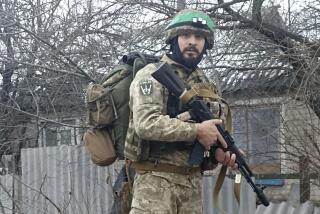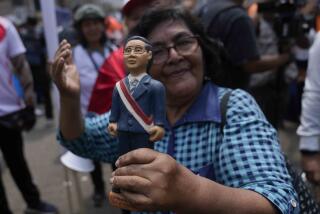The FARC isn’t finished
- Share via
The Revolutionary Armed Forces of Colombia, the oldest and strongest terrorist group in North or South America, turns 45 this week -- that’s 45 years of kidnappings, murders, bombings and drug trafficking. And although the FARC, whose goal is to overthrow the democratically elected government, began terrorizing the country in 1964, many in the United States became aware of the rebels only a few years ago, when they captured three Americans.
Marc Gonsalves, Keith Stansell and Thomas Howes, military contractors with Northrop Grumman Corp., were doing drug surveillance work when their plane crashed in the Colombian jungle. The three men, held along with hundreds of Colombian military, government and civilian hostages, would go on to endure the longest captivity of any Americans. They gained their freedom last year in a daring ruse, when the Colombian army tricked the rebels into turning them over to rescuers, along with other high-profile captives. A group memoir published this year shed new light on the rebels’ viciousness. The men were routinely starved and chained by the neck even while eating, sleeping and bathing. Their captors, mostly impoverished teenagers, had orders to shoot them rather than allow a rescue.
Although that event highlighted one connection between the United States and the FARC, the relationship runs deeper. The U.S. has indirectly been waging war against the rebels since 2000, when the multibillion-dollar aid package known as Plan Colombia began. And although the U.S. has little or nothing to show for that effort in thwarting drug trafficking -- coca growth in Colombia rose 27% from 2006 to 2007 -- the aid has directly contributed to the weakening of not only the leftist guerrillas but right-wing paramilitaries. Since 2002, more than 47,000 combatants have demobilized.
Unfortunately, Colombia still is not at a clear turning point. Under President Alvaro Uribe, the rebels have been outmaneuvered time and again. The rescue of the Americans, along with Franco-Colombian politician Ingrid Betancourt, was a major blow, as was the raid on a FARC camp in Ecuador that killed the group’s second in command, Raul Reyes. Its founder, Manuel Marulanda, died of natural causes last year, and members have deserted by the thousands. But with an estimated 7,000 fighters and $400 million to $600 million each year from coca production, the FARC remains a serious threat.
Earlier this week, Colombian news reports said that the group had returned to guerrilla warfare: It has killed 10 people and injured 36 in car bombings since the beginning of the year. So although real progress is being made in the fight against the FARC, on this grim anniversary it’s also clear that the struggle continues.
More to Read
Sign up for Essential California
The most important California stories and recommendations in your inbox every morning.
You may occasionally receive promotional content from the Los Angeles Times.










